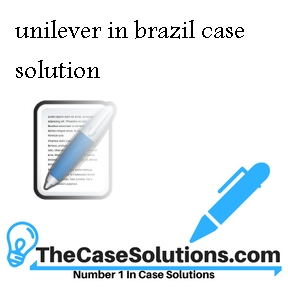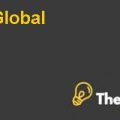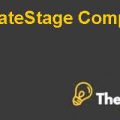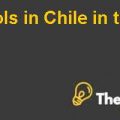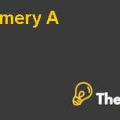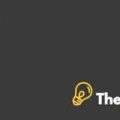Problem Statement
“Cardoso is looking for growth opportunities in Brazil and he is facing threats from local brands that target the lower income group and whether he should change Unilever’s strategies for doing so”.
Analysis
Robert Davidson, the head of Unilever’s home care division has called Laercio Cardoso and he wants to capitalize on the opportunities available in the low income consumer segments in Northeast of Brazil. He is well aware about the level of threat that local competitors pose in low income consumer group. A bunch of questions are rising as Cardoso plans to enter the lower income group and he is finding out possible solutions, as he has to decide whether the company should change the ways it marketed itself in the low income groups in the North East.
SWOT Analysis
Strengths:Unilever enjoys the position of a market leader in Brazil with its three brands Omo, Minerva and Campeiro. Unilever leads in the detergent category of Brazil with 81% of market share, which is more than its rival P&G. Detergent is growing at an astonishing rate of 17%. Detergent’s market share is $106 million in the North East, which makes around 42000 tons of detergent powder.
Unilever is a well-known brand in Brazil and it is recognized by a majority of the people in Brazil. Brand recognition is a strong supporting element for Unilever in Brazil as Brazilians have either seen Unilever’s products or tried them once.
Unilever is a mass production focused company and it majorly manufactures products with the tendency to be produced on larger scale. Mass production allows the company to cater to a larger segment of the market globally and generate higher revenues every year by successfully producing for larger volumes.
Unilever has been in the market for quite some time and has been successfully catering the needs of the consumer groups. The company has made some efficient acquisitions over the time. These acquisitions have added up to the portfolio of the company efficiently and made Unilever portfolio a much stronger one than it was ever before.
Weaknesses:Unilever avoids supplying its products to small retail outlets, which reduces the availability of their detergent products on the shelves. A number of small retail outlets are present on large scale and most of the consumers visit them when purchasing detergents. Absence of Unilever’s products from the shelves eliminates their chances of generating sales from these small retail stores.
Unilever’s best detergent product,Omo, is perceived to be a very expensive product with the best quality. On the other hand, other detergents selling at a comparatively lower price are perceived to be of lower quality. The consumers are forced to opt for lower quality cheaper detergents due to their tight budgets and low levels of income. Premium prices charged by Unilever do not allow the consumers to buy a detergent manufactured by Unilever.
Opportunities: The North East market of Brazil is flooded with competition along with a huge number of local competitors however,it still holds huge potential for growth for Unilever.
Brazil was struck by a fierce recession, however the economy of Brazil has become a much more stable and sustainable economy. The income level of consumers has increased and people are earning more than they used. This change in the economy has increased the buying power of the consumers, which has led to an increased ability of buying premium detergent brands of Unilever.
Cleanliness is a part of Brazil’s culture and they prefer wearing clean clothes every day. They wash on frequent basis. Consumption of detergents is comparatively higher than other cultures, which leads to higher consumption of detergent in their daily routine.
Threats: The behavioral norms in Brazil cannot be standardized. People in North East are different from the people in South East part of Brazil. These differences make it difficult for the organization to focus on both geographical locations with a standardized strategy.
The price of detergent made by the local competitors is cheaper than Unilever’s detergent brands. This takes away a chunk of market share from Unilever in the segment of low income group.Unilever in Brazil Case solution
Porter’s Five Forces:
Buyer’s Power (LOW): Unilever produces on a global level and produces in large volumes. Unilever has a vast line of product categories. The buyers are not empowered enough to effect the prices of Unilever or pull them down.This is because Unilever is facing issues with a specific product, then they can still support it by funding it from the revenues generated from the sales of other products........................
This is just a sample partial case solution. Please place the order on the website to order your own originally done case solution.

